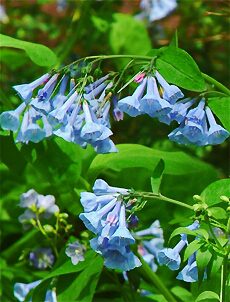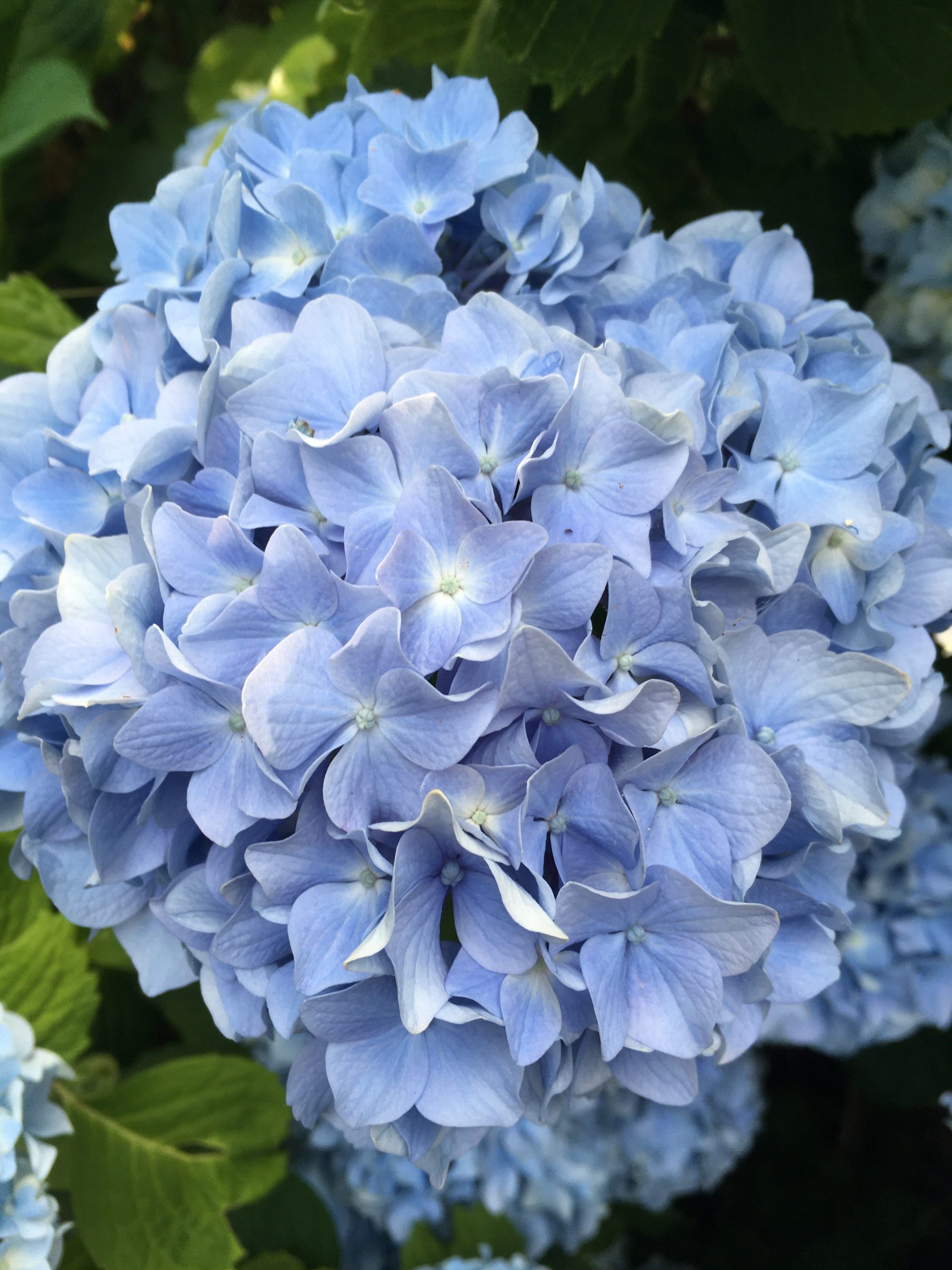
The March Bank is known for its stunning display of blue flowered glory-of-the-snow (
Chionodoxa lucilliae) and Siberian squill (
Scilla sibirica) that saturate the woodland bank—as well as many other parts of the garden—in late March.
Italian windflower (
Anemone apeninna) adds to the blue palette in early to mid-April and overlaps with the, slightly later, nodding, brilliant blue flowers of Virginia bluebell (
Mertensia virginica) that are still putting on a good show in the garden this week. As we enter May, more flowers are adding their blue to the mix: Jacob’s ladder (
Polemonium reptans), wild blue phlox (
Phlox divaricata), and English and Spanish bluebell (
Hyacinthoides non-scripta and
Hyacinthoides hispanica).
Camas (
Camassia sp.) and Siberian Iris (
Iris Sibirica) extend the blue to the sunnier edges of Magnolia Bend.
These blue flowers mix beautifully with every color that the surrounding gardens can muster up; whites, yellows, reds, pinks, purples, and greens in varying shades, tones, and hues.
Blue helps to strengthen and sharpen some colors while toning down others and works well to blend some otherwise contrasting colors.
Used on its own, blue provides a sense of serenity in an otherwise riotous time in the spring flowering landscape. Among the blue flowers, the spiked flowers of the English and Spanish bluebell contrast nicely with the more airy texture of Jacob’s ladder and wild blue phlox to provide a sense of movement and depth within a single-colored massing.
Come and share in the joy of the blues and see how you might be able to work this color into your own home garden.

 The March Bank is known for its stunning display of blue flowered glory-of-the-snow (Chionodoxa lucilliae) and Siberian squill (Scilla sibirica) that saturate the woodland bank—as well as many other parts of the garden—in late March. Italian windflower (Anemone apeninna) adds to the blue palette in early to mid-April and overlaps with the, slightly later, nodding, brilliant blue flowers of Virginia bluebell (Mertensia virginica) that are still putting on a good show in the garden this week. As we enter May, more flowers are adding their blue to the mix: Jacob’s ladder (Polemonium reptans), wild blue phlox (Phlox divaricata), and English and Spanish bluebell (Hyacinthoides non-scripta and Hyacinthoides hispanica). Camas (Camassia sp.) and Siberian Iris (Iris Sibirica) extend the blue to the sunnier edges of Magnolia Bend.
These blue flowers mix beautifully with every color that the surrounding gardens can muster up; whites, yellows, reds, pinks, purples, and greens in varying shades, tones, and hues. Blue helps to strengthen and sharpen some colors while toning down others and works well to blend some otherwise contrasting colors. Used on its own, blue provides a sense of serenity in an otherwise riotous time in the spring flowering landscape. Among the blue flowers, the spiked flowers of the English and Spanish bluebell contrast nicely with the more airy texture of Jacob’s ladder and wild blue phlox to provide a sense of movement and depth within a single-colored massing. Come and share in the joy of the blues and see how you might be able to work this color into your own home garden.
The March Bank is known for its stunning display of blue flowered glory-of-the-snow (Chionodoxa lucilliae) and Siberian squill (Scilla sibirica) that saturate the woodland bank—as well as many other parts of the garden—in late March. Italian windflower (Anemone apeninna) adds to the blue palette in early to mid-April and overlaps with the, slightly later, nodding, brilliant blue flowers of Virginia bluebell (Mertensia virginica) that are still putting on a good show in the garden this week. As we enter May, more flowers are adding their blue to the mix: Jacob’s ladder (Polemonium reptans), wild blue phlox (Phlox divaricata), and English and Spanish bluebell (Hyacinthoides non-scripta and Hyacinthoides hispanica). Camas (Camassia sp.) and Siberian Iris (Iris Sibirica) extend the blue to the sunnier edges of Magnolia Bend.
These blue flowers mix beautifully with every color that the surrounding gardens can muster up; whites, yellows, reds, pinks, purples, and greens in varying shades, tones, and hues. Blue helps to strengthen and sharpen some colors while toning down others and works well to blend some otherwise contrasting colors. Used on its own, blue provides a sense of serenity in an otherwise riotous time in the spring flowering landscape. Among the blue flowers, the spiked flowers of the English and Spanish bluebell contrast nicely with the more airy texture of Jacob’s ladder and wild blue phlox to provide a sense of movement and depth within a single-colored massing. Come and share in the joy of the blues and see how you might be able to work this color into your own home garden.